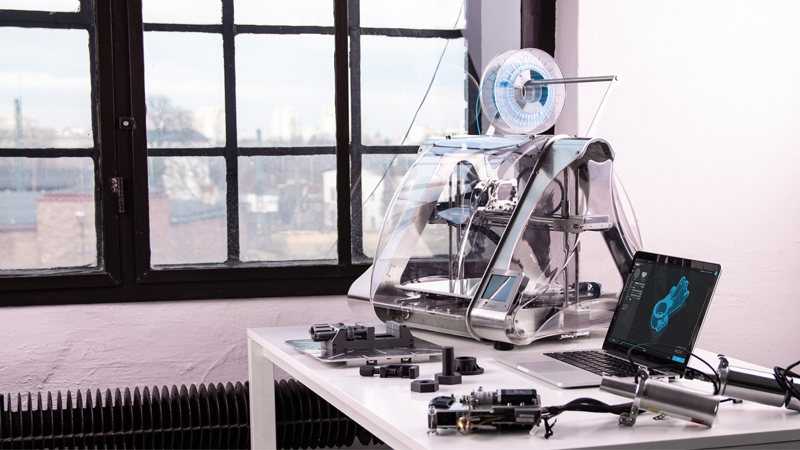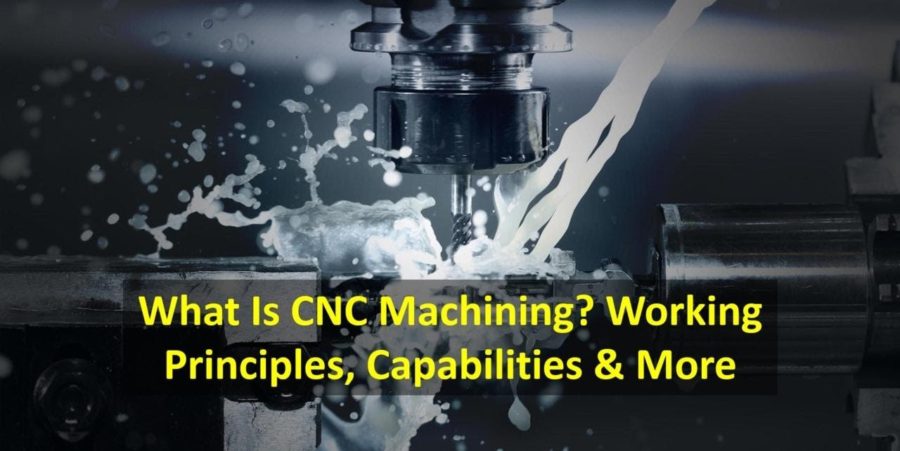CNC machining is the pinnacle of carving and fabrication. It is not just limited to wood, plastic or aluminium fabrication. It goes all the way to steel and many other metals fabrication. CNC is digitalized and automated. It uses codes to receive commands and understand tools and workpieces.
CNC machining is the process of fabrication through subtraction. Meaning it carves and creates things out of materials by cutting parts of. In this article we will discuss more on the question “what is CNC machining?” it’s working principles, capabilities and many more. We will try to provide a complete and clear concept of CNC machining.
Table of Contents
Definition of CNC Machining
CNC stands for Computer Numerical Control. It’s a type of machining that does the work of fabrication automatically. It takes commands from the user or machinist through codes. They are mainly called G-codes and M-codes.
In the traditional perspective, CNC machining does only a few types of machine work. Some common CNC prototype machining services are milling, turning, grinding, routing and drilling and a lot more. You can visit artmachining.com to know more about CNC machining services.
Functions of CNC Machining
CNC machines are fully automated. They only take commands from digital codes and files. Since they are computerized, that is the only way to communicate with the machine. The fabrication or designing process needs tools to work.
The physical tools might be given, but if the machine does not recognize them, they are useless. That is why most machinists have a set of tools in the digital library files of the machine. So the machine can easily recognize the tools.
Whatever design you want to produce, you must give input to the machine. This input of your design can be modelled in 3D software, like CAD. CAM software is responsible for preparing the model. It will check for errors in the model. Then it will create a fabrication instruction for the CNC machine.
When all of this is done the machinist must set the parameters and dimensions for the workpiece. The machinist must also give instructions to the machine. These include cutting speed, voltage, fan speed, RPMs, etc. They will determine how much work the machine has to perform for the workpiece.
The last step is called nesting. It is the orientation and placement of the material pieces. This process finishes the fabrication process.
CNC codes

There are two codes for CNC machines to work with.
One is called G-code. G-code stands for geometric codes. It is a type of language that tells the machine how and where to move. From the help of this code, the machine can determine how much energy out it needs to provide.
G-code is literally the bread and butter for CNC machining, but there is another code that is also very important. That is called the M-code. It stands for machine codes or miscellaneous codes. It gives instructions for other tools that are not really necessary, like the use of coolant, program stoppage, power back up etc.
These two codes together make the CNC machine work perfectly. One gives the directions and the other acts as side support or a backup. If one of them is missing, the machine might not function to its fullest.
Classifications of CNC Machining
There are many different types of CNC machines. Based on their functions which we have mentioned earlier CNC machining comes in many classes. A list of some of the CNC machining is given below.
Cutters:
- Beam cutters
- Plasma cutters
- Water jet cutters
- Fire cutters
Press Breakers
Milling machine
Turning Machine
Driller
Routing machine
EDM (Electrical Discharge Machine)
And there are many more. With the digitalization of machining, the potentials are unlimited. CNC machining is the breakthrough of this century.
CNC Machining Capabilities
Since CNC machining has no limitations and the potential is limitless, there are so many things CNC machining can make. Since the tools have a wide range, there are so many materials CNC machining can make use of. For example, 3 axis milling machines can make most materials of basic shapes.
While a common 3 axis milling machine has 3 axes with linear movements, a 5 axis is way better than that with rotating capabilities. A 5 axis milling machine can rotate the axe cutter head and even the machine bed.
This tremendous improvement in machining is great, but it has costs. CNC machining is the most costly. This is why traditional machines are still in use in the prototyping industry. CNC machining is now used in more quality enriched rapid production.
In industries that require high accuracy, CNC is dominant. For example:
- Aeronautics
- Electro
- Defense
- Mining and drilling
- Industrial machining
- Food and Beverage
- RMG
- Vehicle manufacture
- Prototyping, etc.
CNC machining has made its place in the production industry. To be frank, CNC is dominant now. And why wouldn’t it be? It is reliable, it provides quality and it has rapid production capabilities. Yes, CNC machining is a bit more costly than others, but the big picture is that it makes complex tasks possible.
It is surely difficult to finance and operate CNC but think of all the potentials. It can assure top-notch quality. It promotes the creativity of the machinist. We believe that in the future, even though traditional machines will always prevail, CNC automated machining will become the main go-to.
Conclusion
CNC machining is a revolution in fabrication and manufacturing history. It has changed a lot of things. We don’t have to say no to a design anymore. Complex designs don’t take forever now. We don’t need only experts to carve something.
We can now make any designs come to life if we have the code for it. CNC machining has made all of these possible. Although CNC machining is highly expensive, the output that comes from it is greatly valued.
We hope our take on what is CNC machining, its working principles, capabilities, and many more were covered in this article. This knowledge about CNC will definitely help anyone who wishes to learn.
This is a guest post article from Erik Neil for artmachining.com

